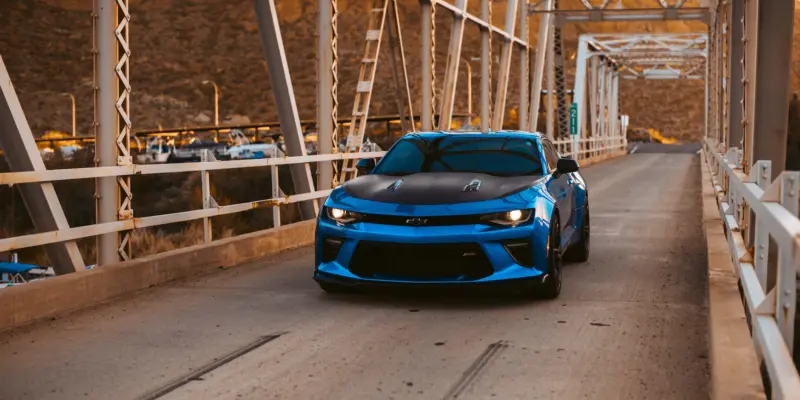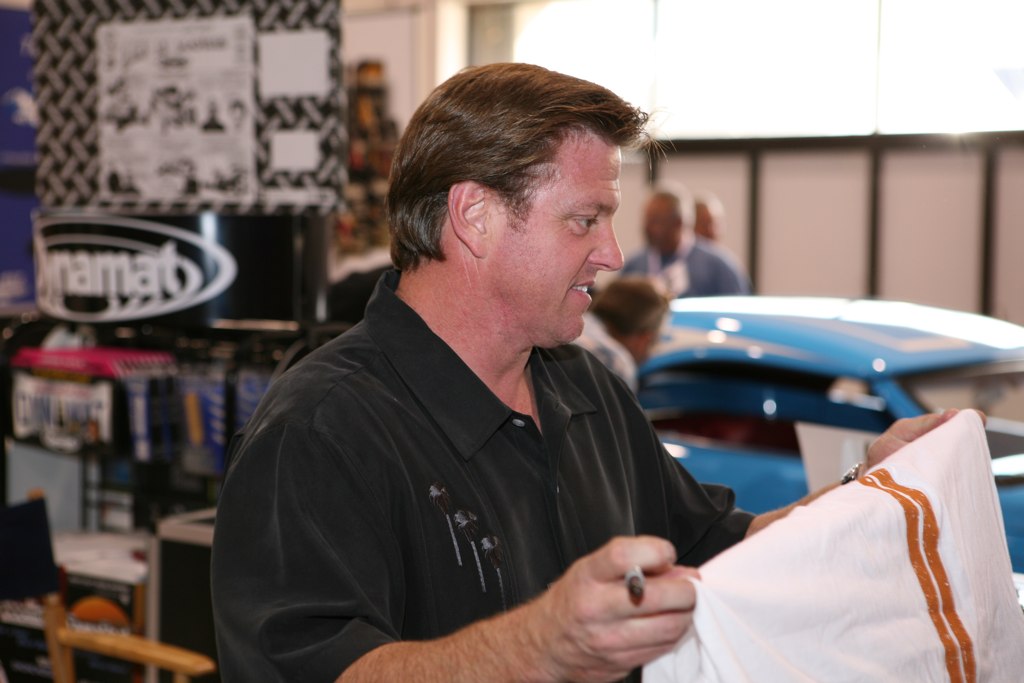
The world of custom automotive design is where innovation and craftsmanship converge, creating rolling pieces of art that captivate enthusiasts globally. At the pinnacle of this intricate universe stands Chip Foose, a name synonymous with breathtaking transformations and unparalleled skill in resurrecting classic cars. Along with industry legends like Danny Koker, Foose has leveraged television to showcase his remarkable abilities, etching his designs into automotive history. Yet, even for a maestro of his caliber, the journey is rarely without its twists, turns, and moments of introspection.
While Foose’s career is largely defined by resounding successes and award-winning builds, a deeper look reveals the path to automotive perfection is often paved with challenges, difficult decisions, and even profound regrets. These aren’t necessarily “mistakes” in a conventional sense, but rather pivotal instances that have shaped his design philosophy, tested his resilience, and provided invaluable lessons. From controversial design choices pushing boundaries to career-defining moments away from the camera’s glare, Foose’s experiences offer a compelling narrative for anyone navigating the high-stakes world of creative enterprise.
In this exclusive exploration, we pull back the curtain on some lesser-known aspects of Chip Foose’s illustrious career. We delve into instances where his expertise faced unique tests or where personal and professional crossroads demanded tough choices. It’s a testament that even those at the highest echelons of talent are not infallible, underscoring the continuous learning curve inherent in any creative pursuit. Fasten your seatbelts, as we embark on a journey through moments that truly defined Chip Foose’s enduring legacy, revealing the depth behind the dazzling chrome and flawless paint.

1. **The Controversial 1974 Jaguar E-Type Redesign**The Jaguar E-Type is revered globally as one of the most iconic cars ever produced, a paragon of beautiful British design. Its classic lines and elegant proportions have long made it a darling among enthusiasts. So, when Chip Foose unveiled his custom E-Type design for the SEMA show in Las Vegas, it registered as a shock to many traditionalists. The departure from the original car’s aesthetic was significant, raising eyebrows and sparking debate within the automotive community.
This particular design was described as “confusing,” marked by an “odd mix of muscle car elements and classic car tie-ins.” Foose incorporated Dayton-style rims and white wall tires, elements that, to many observers, simply “did not go well with the rest of the design.” The front of the car featured a hood “designed for a sports car,” coupled with a “shaved design that made the car look like a silver bullet.” This amalgam of styles resulted in a creation where “nothing else made sense about this Jaguar,” despite being “well received” at the SEMA show.
While the SEMA show audience might have appreciated the radical departure, the design stands out in Foose’s extensive portfolio. The context explicitly states, “Foose never designed a car like this again and there were good reasons for that.” This candid admission highlights a rare instance where even a design visionary explored an aesthetic direction he chose not to revisit. It underscores the experimental nature of custom car design and the inherent risks involved in pushing artistic boundaries, especially when reimagining a universally beloved classic.
The 1974 Jaguar E-Type project serves as a powerful reminder that even celebrated designers occasionally traverse unconventional paths that, while appreciated by some, ultimately don’t become part of their signature style. It demonstrates an artist’s willingness to experiment and the invaluable lessons learned when a vision, however bold, doesn’t quite coalesce into the enduring masterpiece intended. This experience likely contributed to Foose’s refined understanding of balancing innovation with the inherent spirit of a vehicle.
Car Model Information: 1974 Jaguar E-Type XKE Roadster
Sp: uk
Name: Jaguar E-Type
Caption: 1961 E-Type Series 1 3.8-Litre, the first production model of this open two-seater
Aka: Jaguar XK-E (North America),Jaguar V-12
Manufacturer: Jaguar Cars
Production: 1961–1974
Class: Sports car
Predecessor: Jaguar XK150
Related: Jaguar D-Type,Jaguar XJ13
Successor: Jaguar XJS
Layout: FMR layout
Assembly: Coventry,England
Designer: Malcolm Sayer
Categories: 1970s cars, 2+2 coupés, All Wikipedia articles written in British English, All articles with dead external links, All articles with specifically marked weasel-worded phrases
Summary: The Jaguar E-Type, or the Jaguar XK-E for the North American market, is a British front mid-engined sports car that was manufactured by Jaguar Cars Ltd from 1961 to 1974. Its sleek appearance, advanced technologies, high performance, and competitive pricing established it as an icon. The E-Type’s claimed 150 miles per hour (240 km/h) top speed, sub-7-second 0 to 60 mph (97 km/h) acceleration, largely unitary body construction, front and rear independent suspension with disc brakes, mounted inboard at the rear, and rack-and-pinion steering spurred industry-wide changes.
The E-Type was based on Jaguar’s D-Type racing car, which had won the 24 Hours of Le Mans for three consecutive years beginning in 1955.
The E-Type employed what was, for the early 1960s, a novel design principle, with a front subframe carrying the engine, front suspension and front bodywork bolted directly to the body tub. No ladder frame chassis, as was common at the time, was needed and as such the first cars weighed only 1,315 kg (2,899 lb).
It is rumored that, on its debut on 15 March 1961, Enzo Ferrari called it “the most beautiful car ever made”, but this statement is not fully confirmed. In 2004, Sports Car International magazine placed the E-Type at number one on their list of Top Sports Cars of the 1960s. In March 2008, the Jaguar E-Type ranked first in The Daily Telegraph’s online list of the world’s “100 most beautiful cars” of all time.
Get more information about: Jaguar E-Type
Buying a high-performing used car >>>
Brand: Jaguar Model: E-Type
Price: $79,900 Mileage: 23,675 mi.
Read more about: Don’t Fall for the Hype: The 15 Cars That Look Absolutely Stunning But Drive Terribly
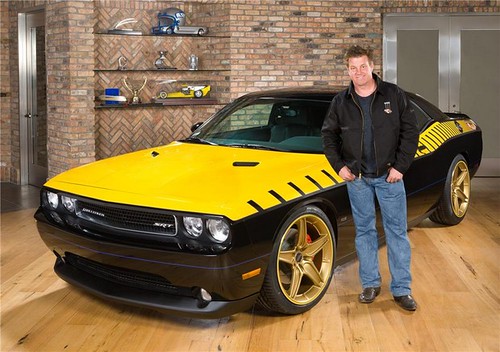
2. **The Turbulent Departure from Boyd Coddington’s Shop**Chip Foose’s career trajectory is celebrated for his independent success and the establishment of Foose Design. However, a significant, somewhat turbulent, chapter involved his time at Boyd Coddington’s shop. This period was not without its complexities, culminating in Foose’s departure under circumstances subject to various interpretations. The move was clearly a pivotal moment, shaping his entrepreneurial journey and the development of his distinct design ethos.
The context suggests Foose’s leaving was tied to financial difficulties faced by Coddington’s enterprises. It states, “Boyd first declared bankruptcy in Jan of 1998. That was when Chip left. The wheel company had gone bust.” This indicates Foose’s decision to strike out on his own was not merely an artistic impulse but a pragmatic response to an unstable business environment. Boyd Coddington’s subsequent attempts at reorganization and starting new companies further underscore the financial turmoil, making Foose’s departure appear a shrewd strategic move.
Despite the clear financial rationale, the departure was not without personal friction. The context notes that “Boyd expressed his displeasure over Foose’s having left.” There were also internal dynamics, such as a machinist “doing a joint project with him on the side,” which “got Mike fired.” This illustrates the high-pressure environment and personal stakes when a key talent decides to leave a prominent establishment. The perception from some was that “Chip may be telling the story to suit his own interests,” highlighting the contested nature of narratives in competitive industries.
However, the prevailing sentiment in the provided information supports Foose’s account. It is asserted that “Nothing that Chip said was untrue,” and that “The writing was on the wall and Chip was smart enough to get out.” This period, while challenging, was ultimately a testament to Foose’s business acumen and foresight in recognizing an impending collapse. It allowed him to transition from being a key designer within another’s empire to forging his own, unencumbered path, laying the groundwork for Foose Design.
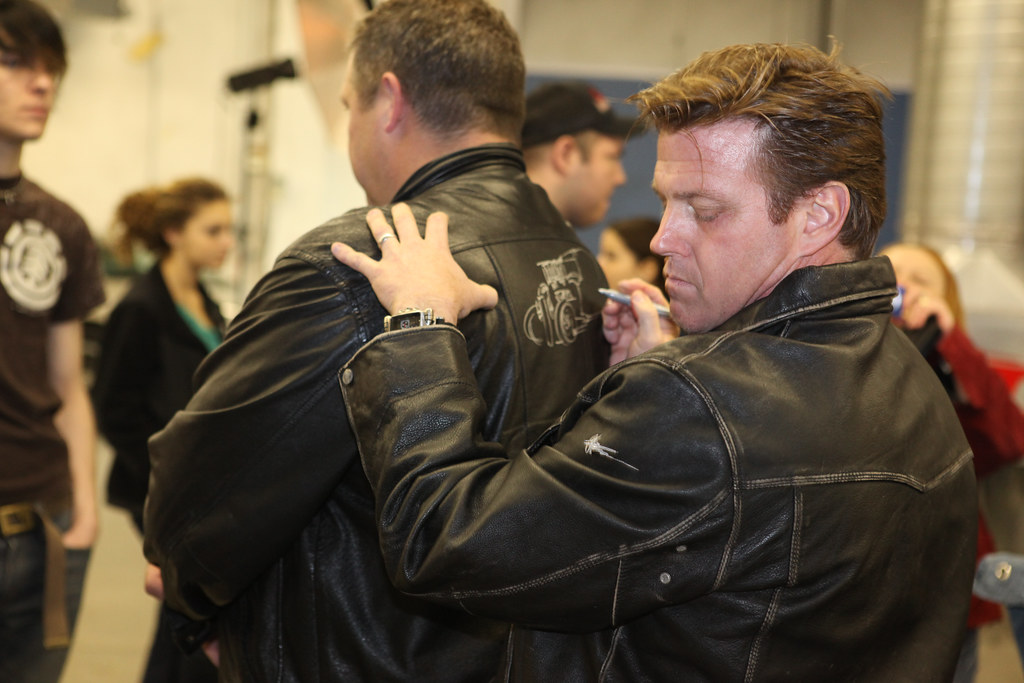
3. **Declining the Co-Host Role on Monster Garage**The early 2000s marked a significant period for custom car television, with shows like “Monster Garage” capturing a wide audience. Jesse James, a prominent figure, extended an offer to Chip Foose to co-host his show. For many, such an offer would represent an immediate opportunity for massive exposure. However, Foose, ever meticulous about his craft and artistic integrity, made a choice that underscored his deeply personal vision for automotive design. He famously “turned it down.”
Foose’s rationale for declining this high-profile position was straightforward and deeply aligned with his creative philosophy. He explained that “the projects didn’t align with the kind of cars he wanted to build.” “Monster Garage” was known for its unconventional, often outlandish, transformations, a stark contrast to Foose’s pursuit of “perfection in what he calls ‘rolling pieces of art’.” This decision, far from being a missed opportunity, was a deliberate step to protect his artistic integrity and ensure his work remained true to his core values.
This refusal was not merely a passive turning down of an offer; it was an active declaration of his artistic direction. It demonstrated a clear understanding of his niche and a resolute commitment to his vision, even if it meant foregoing immediate widespread fame. This unwavering dedication eventually led Discovery Channel to pitch him a show that *did* align with his values, one that would follow his “real builds.” This pivotal choice highlights that sometimes, the most strategic career move is to decline what seems like a golden opportunity if it compromises one’s fundamental purpose.
Ultimately, Foose’s decision proved prescient. By staying true to his design principles and resisting the allure of a misaligned opportunity, he cleared the path for a television vehicle—Overhaulin’—that would authentically showcase his talents and passion. This act of selective engagement reinforces a crucial lesson for creative professionals: understanding and upholding one’s unique brand and artistic boundaries can lead to more fulfilling and ultimately more successful ventures. It was a moment where conviction triumphed over commercial expediency.
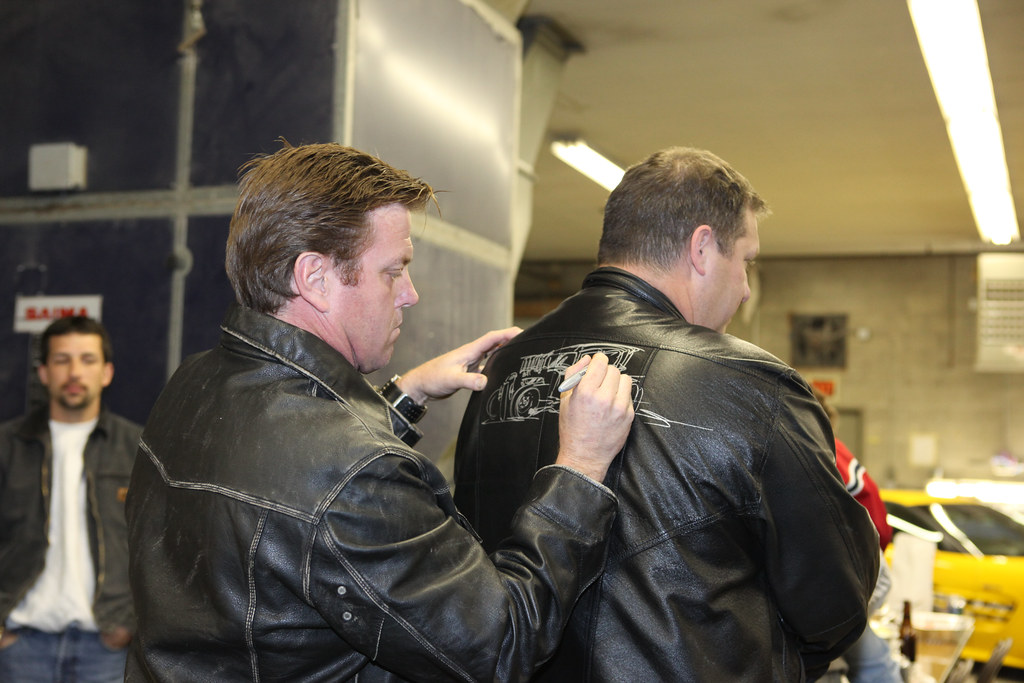
4. **The Grueling Overhaulin’ Pilot: A Test of Endurance**Before “Overhaulin’” became the beloved hit reality show, transforming over 170 cars, it began with a pilot episode that was a true trial by fire for Chip Foose. This initial project, a Ford Thunderbird, was not just a test of design but an extreme demonstration of endurance and dedication. The intensity of this build provided a stark preview of the relentless pace and demanding nature of reality television production, pushing Foose to his absolute limits.
The challenge laid before Foose was formidable: the Ford Thunderbird had “to be finished in less than seven weeks.” This aggressive timeline demanded an extraordinary commitment, forcing him into a grueling schedule unsustainable for most. The context vividly describes his regimen: Foose “worked 40-hour shifts, slept for eight, and repeated the cycle until it was done.” This relentless cycle of work and minimal rest illustrates the immense personal sacrifice required to bring ambitious projects to fruition under immense time pressure.
The physical toll of this Herculean effort was undeniable. During this intense period, Foose “dropped 27lbs,” a stark indicator of the sheer physical and mental strain he endured. This wasn’t merely about building a car; it was about navigating a high-stakes, high-pressure production environment, where artistic vision had to be realized within unforgiving logistical constraints. The successful completion of the Thunderbird, under such duress, was a testament to his skills and unwavering resolve.
The success of that demanding pilot build was the direct catalyst for “Overhaulin’” becoming a full-fledged series. It proved not only Foose’s ability to deliver under pressure but also the compelling drama inherent in his process. This early experience, though punishing, forged the resilience and commitment that would underpin the entire run of the show. It demonstrated that behind the magic of television transformations lay incredible willpower and tireless dedication, setting a precedent for the high standards that would define Foose’s work on screen.
Car Model Information: 1966 Ford Thunderbird Base
Name: Ford Thunderbird
Caption: 1957 Thunderbird
Manufacturer: Ford Motor Company
Production: unbulleted list
ModelYears: unbulleted list
Class: unbulleted list
Layout: Front-engine, rear-wheel drive layout
Categories: 1960s cars, 1970s cars, 1980s cars, 1990s cars, 2000s cars
Summary: The Ford Thunderbird is a personal luxury car manufactured and marketed by Ford Motor Company for model years 1955 to 2005, with a hiatus from 1998 to 2001.
Ultimately gaining a broadly used colloquial nickname, the T-Bird, the model was introduced as a two-seat convertible, subsequently offered variously in a host of body styles including as a four-seat hardtop coupe, four-seat convertible, five-seat convertible and hardtop, four-door pillared hardtop sedan, six-passenger hardtop coupe, and five-passenger pillared coupe, before returning in its final generation, again as a two-seat convertible.
At its inception, Ford targeted the two-seat Thunderbird as an upscale model. The 1958 model year design introduced a rear seat and arguably marked the expansion of a market segment that came to be known as personal luxury cars, positioned to emphasize comfort and convenience over handling and high-speed performance.
Get more information about: Ford Thunderbird
Buying a high-performing used car >>>
Brand: Ford Model: Thunderbird
Price: $44,999 Mileage: 71,017 mi.
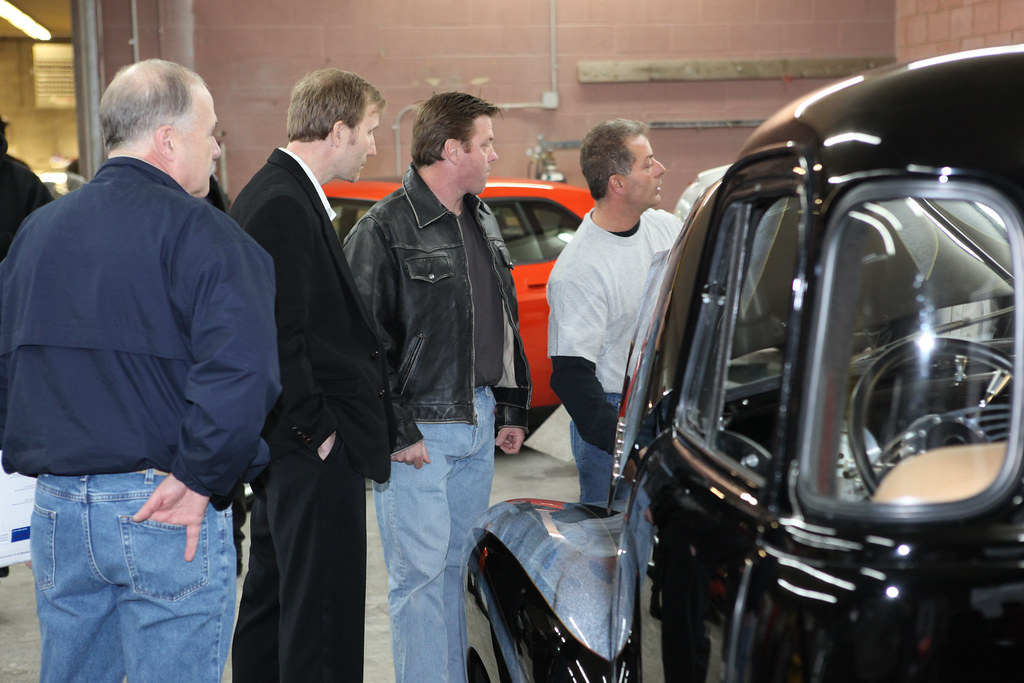
5. **The Changing Landscape of Car Culture: A Loss of Edge**Chip Foose is not just a master craftsman; he is also a keen observer and passionate advocate for the core values of car culture. However, he perceives a worrying trend in the contemporary car show world, one he believes is causing the culture to lose its vital edge. This isn’t a mistake of his own, but a critical observation about a societal shift that impacts the very essence of automotive design and innovation. His analysis provides crucial insight into the evolving standards within the enthusiast community.
Foose laments that judging in car shows has shifted away from its traditional roots. He states that it “used to be about what you built and how well you built it.” This emphasis on tangible craftsmanship and engineering excellence, once paramount, has, in his view, been supplanted by a more subjective criterion. He now sees it as “more like a popularity contest,” where individual opinions and subjective appeal overshadow objective quality. This transformation fundamentally alters the incentive structure for builders and designers.
The consequence of this shift is profound for the industry. Foose argues that “when opinions replace craftsmanship as the deciding factor, safe, traditional builds end up winning.” This preference for the predictable over the pioneering leads to a stifling of creativity. Instead of boundary-pushing projects, the community sees “fewer boundary-pushing projects and more ‘pretty but predictable’ hot rods.” This trend, he suggests, represents “a loss not just for competitors, but for the entire industry,” as it discourages the risk-taking essential for true innovation.
For Foose, the true essence of automotive artistry, much like the most impactful reveals on “Overhaulin’,” lies not in playing it safe but in making something “bold, personal, and unforgettable.” His critique is a call to action, urging the community to re-emphasize the foundational principles of design, engineering, and craftsmanship. He contends that the real trophy isn’t “the hardware you take home” but “the moment someone sees their dream car for the first time and can’t even speak.” This highlights his profound belief in the emotional resonance of exceptional design.
Read more about: Susan Kendall Newman: Reflecting on a Life of Artistry, Activism, and Unyielding Dedication
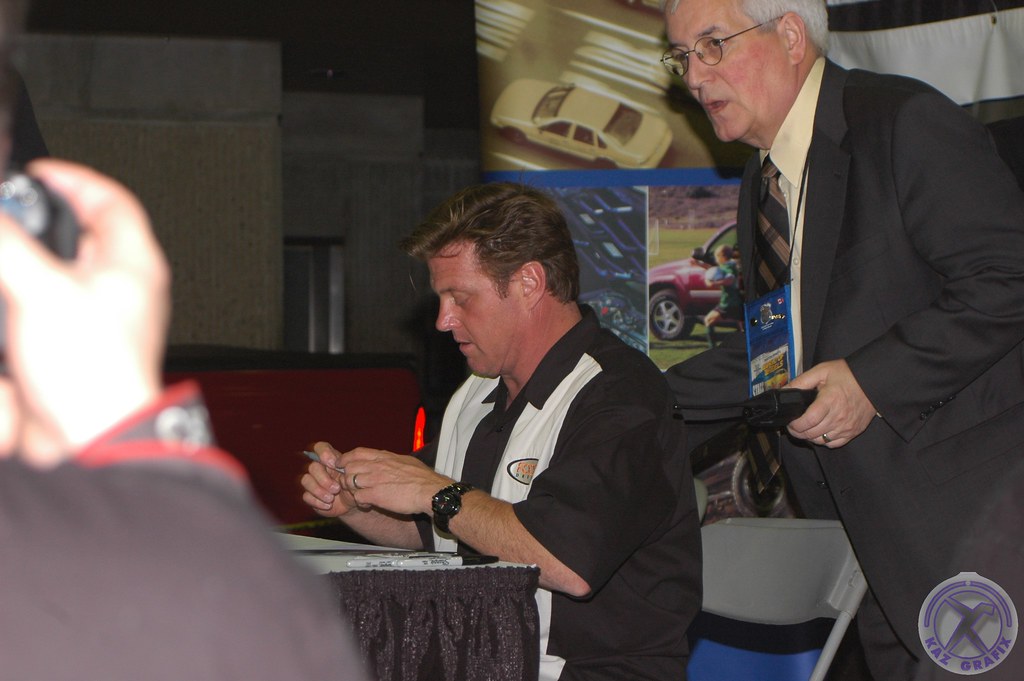
6. **The Regretted Sale of the “0032” Ford Roadster**Among the myriad of magnificent vehicles Chip Foose has designed and built, one stands out as a source of profound personal regret: the “0032” full-fendered Ford roadster. This particular build was not just another project; it was a testament to his artistry, earning him the prestigious “America’s Most Beautiful Roadster” award. Its sale represents not a design flaw or a career misstep, but a poignant personal sacrifice made under significant financial pressure, revealing a human side to the automotive icon.
The decision to part with such an acclaimed piece of his own work was driven by a crucial business need. Foose revealed that he sold the “0032” roadster “In order to finance the purchase of my building, which is now the headquarters of Foose Design.” This was not a casual transaction but a strategic, albeit painful, necessity to establish the physical foundation for his burgeoning design empire. It underscores the challenging realities of entrepreneurship, where even an artist of Foose’s caliber must make difficult choices that prioritize long-term vision over immediate personal attachment.
Despite the logical business rationale, the emotional weight of this decision has clearly lingered. When directly asked about his “biggest mistake,” Foose unequivocally pointed to this sale, stating, “I wish still I had it.” This sentiment highlights the deep personal connection creators often have with their works, particularly those that embody a peak of their skill and receive significant recognition. The “0032” roadster was not just a car; it was a symbol of an achievement, a tangible representation of a personal and professional milestone.
The regret over selling the “0032” Ford roadster serves as a powerful illustration that financial prudence and business strategy can sometimes demand personal sacrifices that leave a lasting imprint. It speaks to the bittersweet nature of success, where the very foundations of future triumphs may require letting go of cherished accomplishments. This personal admission from Foose offers a glimpse into the complexities of his journey, demonstrating that even with immense success, some choices, no matter how necessary, can remain a source of longing.
Beyond the challenging decisions and foundational “mistakes” that shaped Chip Foose’s trajectory, there lies a deeper layer of philosophy, motivation, and personal history that truly defines the man behind the legendary designs. These insights offer a comprehensive look into what continues to drive his innovative spirit, from his earliest memories to his aspirations for the future of automotive art. Understanding these aspects reveals the rich tapestry of experiences that inform every curve, every engine roar, and every emotional reveal.
Here, we delve into the core tenets of Foose’s world, uncovering the childhood sparks that ignited his passion, the true emotional engine of his celebrated television show, his perspective on the pinnacle of automotive design, his ongoing projects, and the enduring principles that guide his artistic endeavors. This exploration paints a complete picture of an icon who, despite his immense success, remains grounded in a profound love for craftsmanship and connection.
Car Model Information: 1929 Ford Roadster
Caption: 1932 Ford Model B Standard Tudor 2-door sedan
Name: 1932 Ford Model B
Manufacturer: Ford Motor Company
Production: 1932–1934
Predecessor: Ford Model A (1927–1931)
Successor: Ford Model 48
Class: Full-size Ford
BodyStyle: phaeton body,Pickup truck
Engine: 201 cuin
Abbr: on
Transmission: Non-synchronous transmission,Manual transmission
Wheelbase: 2692 mm
Disp: flip
Layout: FR layout
Assembly: see list below
Related: Ford Model Y,Ford Köln,Ford Rheinland,GAZ-M1
Designer: Edsel Ford
Categories: 1930s cars, All articles needing additional references, All articles with unsourced statements, Articles needing additional references from January 2021, Articles with short description
Summary: The term 1932 Ford may refer to three models of automobile produced by Ford Motors between 1932 and 1934: the Model B, the Model 18, and the Model 40. These succeeded the Model A. The Model B had an updated four-cylinder engine and was available from 1932 to 1934. The Model 18 was the first Ford fitted with the flathead V-8, and it was available in the Model 40 too in 1933 and 1934. The company also replaced the Model AA truck with the Model BB, available with either the four- or eight-cylinder engine.
The three car models were replaced by the streamlined Model 48 in 1935.
Get more information about: 1932 Ford
Buying a high-performing used car >>>
Brand: Ford Model: Roadster
Price: $39,980 Mileage: 500 mi.
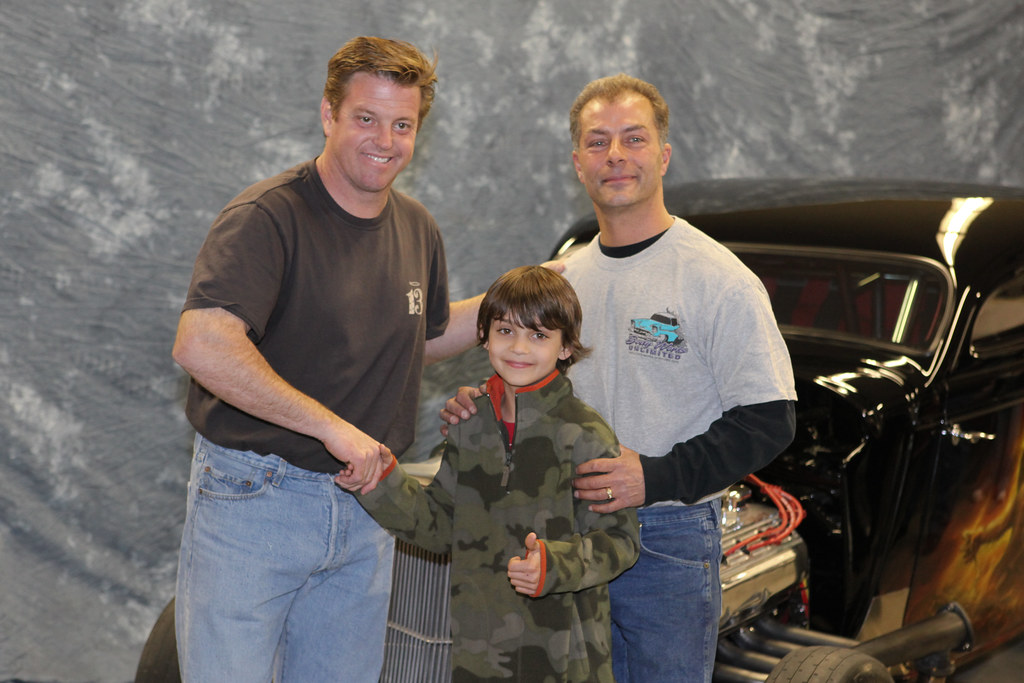
7. **Early Origins: The Forge of Foose’s Design Ethos**Every master craftsman has a beginning, a crucible where their foundational skills and unique vision are first forged. For Chip Foose, this origin story is deeply rooted in his childhood, specifically within the bustling environment of his father’s hot rod shop. It was here, surrounded by the sights, sounds, and smells of automotive creation, that his earliest memories took shape, igniting a lifelong passion for design.
Foose recalls watching “full-sized customs take shape” in his dad’s shop, a formative experience that laid the groundwork for his artistic appreciation. These real-world automotive transformations sparked his imagination, leading him home to meticulously build “miniature twins out of plastic kits and Hot Wheels.” This early immersion in both grand and scaled-down design processes honed his eye and instilled a fundamental understanding of form and function from a remarkably young age.
A telling anecdote from his childhood reveals the stubborn streak and unyielding commitment to his artistic vision that would later define his career. By the tender age of 10, Foose was already “clashing with his father over design choices,” famously “crying when his dad wanted to add lines to their green metal-flake family van because he thought it looked cleaner without them.” This early insistence on design purity, even against a parental figure, underscores the inherent drive for aesthetic perfection that remains a hallmark of his work today.
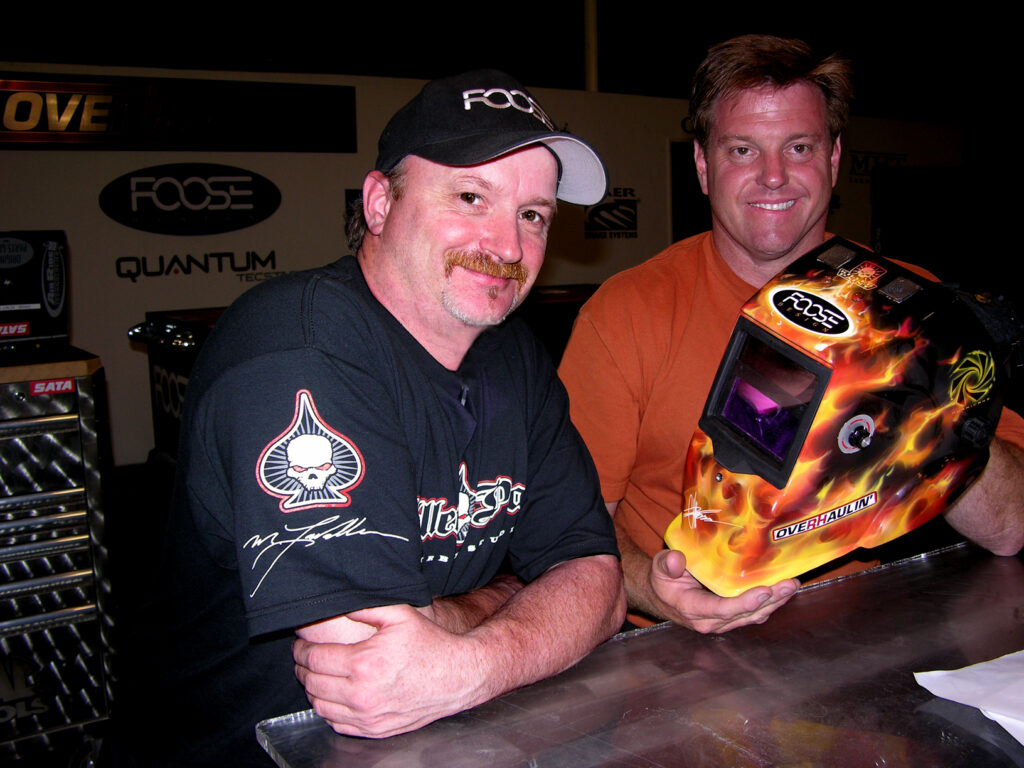
8. **Beyond Horsepower: The Emotional Core of Overhaulin’**For viewers, “Overhaulin’” was a spectacle of mechanical mastery, breathtaking transformations, and the sheer power of custom automotive design. Yet, according to Chip Foose himself, the true essence of the show, the “real engine” behind its enduring appeal, had little to do with horsepower or intricate engineering. Instead, it was fundamentally driven by something far more profound: human emotion and connection.
Foose unequivocally states that what “really drove the show wasn’t horsepower at all.” He revealed that the epic transformations, the meticulous handcrafted details, and the technical wizardry were merely “part of the setup.” While these elements were crucial to the show’s premise, they served a larger purpose, acting as the elaborate stage for moments of genuine human reaction that transcended the automotive world.
The “real magic” for Foose was witnessing “unsuspecting owners walk in thinking their car was gone, only to find it completely reborn.” These “raw, emotional reactions – the shock, the happy tears – were what truly fueled him to do it again and again.” This insight redefines the show’s success, positioning it not just as a display of car building but as a powerful narrative of dreams fulfilled and deep personal connections validated through the artistry of restoration.
Ultimately, Foose articulated that the motivation to constantly recreate these incredible reveals came from a place of “heart, emotional reveals, and real connections.” This perspective offers a valuable lesson in content creation and business strategy: authentic emotional engagement can be a more powerful driver than technical prowess alone, creating a resonance that transforms a television program into a deeply personal experience for both its subjects and its audience.

9. **The Apex of Artistry: Foose’s Unattainable Dream Car**Every artist, no matter how prolific or celebrated, often holds a singular piece in their heart that represents the zenith of their craft, a masterpiece that, for various reasons, remains just beyond their grasp. For Chip Foose, this “best car you’ll never own” is the “Impression” 1936 Ford, a creation that stands as the “high-watermark of my career so far” and a testament to his unparalleled design vision.
The “Impression” 1936 Ford is not just any custom car; it’s a vehicle that garnered the prestigious Don Ridler award in 2005, an accolade recognizing it as one of the year’s finest hot rods. This award itself signifies an extraordinary level of craftsmanship, innovation, and aesthetic execution, distinguishing it even within Foose’s extensive portfolio of award-winning builds. It epitomizes a moment where his artistic capabilities converged to create something truly transcendent.
Despite its profound significance to his career and his deep personal connection to its creation, the “Impression” remains an unattainable dream for Foose himself. The reason is simple and somewhat bittersweet: its owner, Ken Reister, “said he’ll never sell it.” This highlights a poignant reality for many artists—their most celebrated works often find homes with collectors who cherish them, making them inaccessible to even their creators.
This sentiment underscores a unique aspect of automotive artistry, where the profound joy of creation is sometimes tempered by the understanding that a piece of one’s legacy will reside permanently in another’s possession. For Foose, the “Impression” is more than just a car; it’s a benchmark of his professional journey, a physical manifestation of his highest achievements, and a powerful reminder of the lasting impact of exceptional design, even if he cannot personally re-acquire it.
Car Model Information: 2021 Ford Explorer XLT
BirthDate: [object Object]
Occupation: Actor,Impressionist
YearsActive: 2006–present
Website: anthonyingruber.com
Categories: 1990 births, 21st-century Australian male actors, 21st-century Dutch male actors, Accuracy disputes from March 2022, Articles with hCards
Summary: Anthony Ingruber (born 5 February 1990) is a Dutch-Australian actor and impressionist. Ingruber is best known for his role as John Doe/Joker in the video games Batman: The Telltale Series (2016) and Batman: The Enemy Within (2017–18) as well as for portraying the younger version of Harrison Ford’s character William Jones in the film The Age of Adaline (2015) and body doubling for Ford as Indiana Jones in Indiana Jones and the Dial of Destiny (2023).
Get more information about: Anthony Ingruber
Buying a high-performing used car >>>
Brand: Ford Model: Impression
Price: $27,987 Mileage: 42,720 mi.
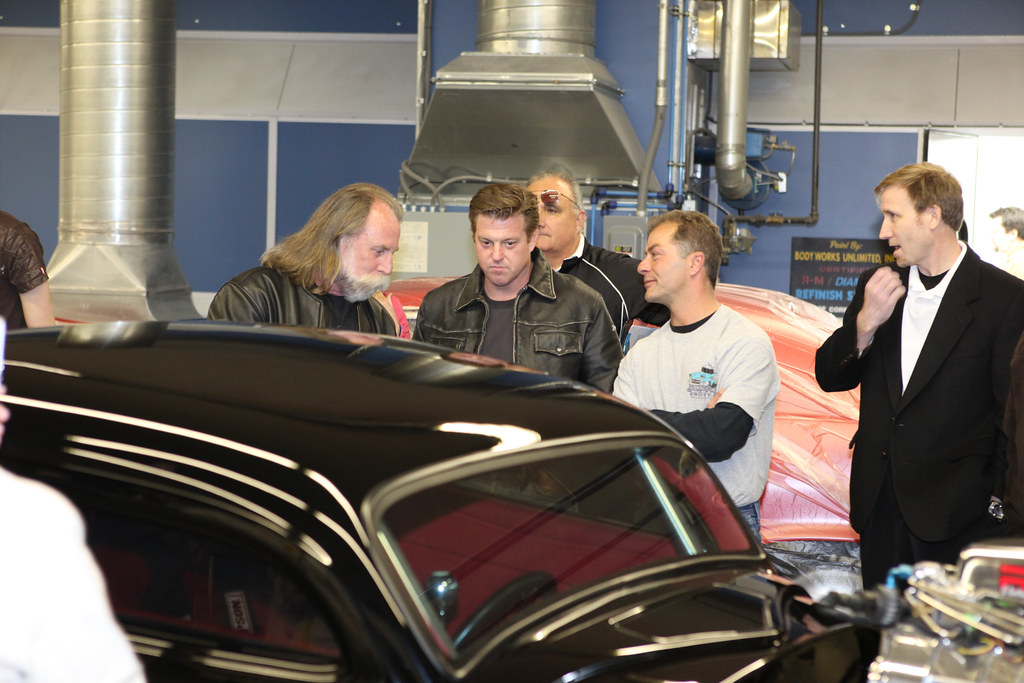
10. **Crafting Tomorrow: Foose’s Vision for Future Automotive Endeavors**While Chip Foose’s career is marked by a legacy of iconic builds and memorable transformations, his journey as an innovator is far from over. His personal collection and ongoing projects offer a fascinating glimpse into his active mind and his aspirations for future automotive endeavors, showcasing a continuous pursuit of creativity and a diverse appreciation for automotive heritage and potential.
Among his current works, the “P32” aircraft-inspired 1932 Ford hot-rod stands out as a project “currently under construction.” This detail speaks volumes about Foose’s forward-looking approach; even with a celebrated past, he is actively engaged in pushing new boundaries and exploring fresh conceptual themes, such as drawing inspiration from aviation for a classic hot rod. This blend of vintage and visionary thinking is a hallmark of his design philosophy.
His personal garage further reflects a broad and eclectic taste, housing everything from a “1950s-style 1947 Ford convertible” to a “2002 T-Bird, which I designed and rebodied for the SEMA show in 2002, called Speedbird.” This diverse collection, including muscle cars, classic trucks, and custom roadsters, suggests that his aspirations are not confined to a single genre but embrace the full spectrum of automotive artistry, indicating a rich wellspring for future designs.
The very act of building and rebuilding, as exemplified by his ongoing projects, signifies a relentless drive for innovation. Foose isn’t just a custodian of classics; he’s a visionary actively shaping the future of custom cars by continually experimenting with new ideas and perfecting existing forms. This perpetual state of creation ensures that his contributions to the automotive world will continue to evolve, inspiring new generations of enthusiasts and builders alike.
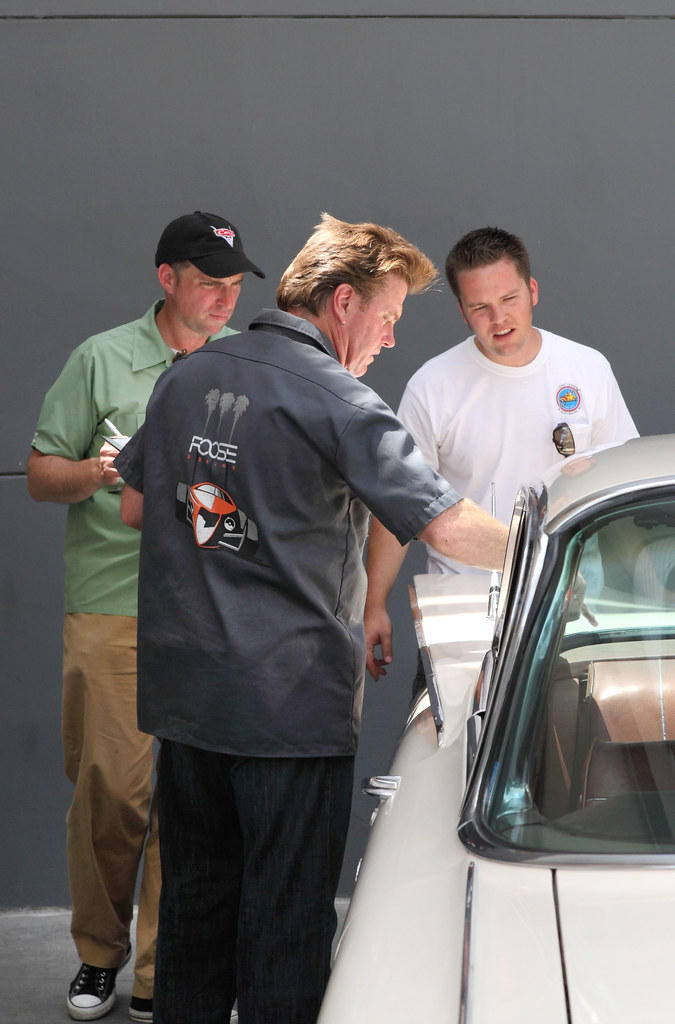
11. **Defining Excellence: Foose’s Philosophy of Bold, Personal Design**In a rapidly evolving car culture, Chip Foose’s philosophical stance on what constitutes true automotive excellence remains unwavering, acting as a compass for his own work and a critique of broader industry trends. His vision is rooted not in playing it safe or conforming to popular sentiment, but in a profound belief that the most impactful designs are those that are “bold, personal, and unforgettable.”
Foose argues that the pursuit of genuine automotive artistry transcends mere aesthetics. He believes that the “best cars” are those that dare to be different, that carry a distinctive signature, and that leave an indelible impression. This philosophy implicitly challenges the “pretty but predictable” hot rods he observes gaining traction in a judging environment that has become overly focused on popularity rather than groundbreaking craftsmanship.
For Foose, the creation of an exceptional custom vehicle is an intensely personal journey. It’s about injecting a part of oneself into the design, allowing the car to speak volumes about the creator’s vision and the owner’s dreams. This personal touch, he contends, is what elevates a car from a mere mode of transport or a showpiece to a genuine work of art that resonates deeply with those who experience it.
Ultimately, Foose’s definition of success extends beyond hardware and accolades. He states that “the trophy isn’t the hardware you take home. It’s the moment someone sees their dream car for the first time and can’t even speak.” This encapsulates his philosophy: the true measure of a build’s greatness lies in its capacity to evoke profound emotional responses, to create a moment of pure, speechless awe. It is this pursuit of the bold, the personal, and the unforgettable that defines his enduring legacy in the automotive world.
Chip Foose’s journey through the automotive landscape is far more than a collection of magnificent builds and television appearances; it is a masterclass in artistic integrity, entrepreneurial resilience, and profound personal conviction. From the spirited clashes with his father that forged his early design ethos to the strategic business decisions that cemented his independence, and from the grueling demands of reality TV to the philosophical underpinnings of his award-winning creations, every turn in his path reveals a commitment to excellence that is both rigorous and deeply personal.
His insights into the “Overhaulin’” phenomenon, the poignant regret over a cherished sale, and his vision for the future of custom cars paint a vivid picture of a man who continually balances the demands of innovation with a heartfelt respect for tradition. Foose’s career teaches us that even at the pinnacle of success, the road of creativity is paved with continuous learning, tough choices, and an unwavering dedication to one’s core values. He stands as a living testament to the power of passion, proving that true artistry lies in daring to be bold, personal, and always unforgettable.

